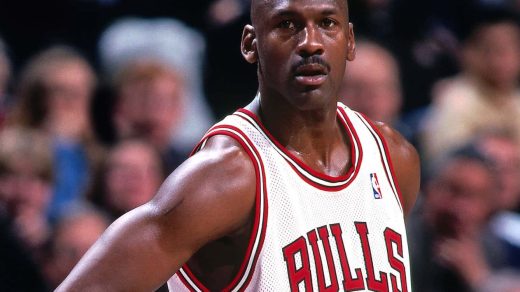When we discuss the most expensive sports in the world, conversations typically revolve around equipment costs, membership fees, and travel expenses.
However, the true cost of participating in elite sports goes far beyond these obvious financial considerations.
The most expensive sports demand extraordinary investments not just of money, but of time, physical resources, psychological resilience, and often family commitment.
In this comprehensive examination of the world’s most expensive sports, we’ll explore not just their financial requirements, which are indeed substantial, but also the hidden costs that participants rarely discuss publicly.
From the decade-plus development timelines to the opportunity costs of early specialization, these most expensive sports represent comprehensive life commitments that shape participants’ identities, relationships, and futures.
Whether you’re considering participation, supporting a young athlete, or simply curious about what makes these pursuits so exclusive, this guide will provide insight into the complete investment required to compete in the world’s most expensive sports.
Most Expensive Sports in the World

Beyond the luxury and prestige often associated with these activities lies a complex reality of sacrifice, commitment, and extraordinary dedication that represents the true cost of sporting excellence.
Formula 1 Racing: The Ultimate Engineering and Human Investment
Formula 1 Racing sits unchallenged at the pinnacle of motorsport expense. While the financial requirements are well-documented, the complete cost of participation extends far beyond the balance sheet.
The Financial Foundation:
- Team Operating Budgets: Despite $145 million budget caps, top teams find exclusions and exceptions that push real spending to $250-400 million annually
- Car Development: Each F1 car represents approximately $15-20 million in design, components, and assembly
- Human Resources: Teams employ hundreds of specialized engineers, mechanics, and support staff
- Global Logistics: Transporting equipment and personnel to 24+ international races annually
Beyond Money: The Hidden Costs:
What makes Formula 1 truly expensive goes beyond financial investment:
- Time Compression: Development cycles that would take years in other industries must happen in weeks or months
- Psychological Pressure: Engineers and drivers working under extraordinary scrutiny, where milliseconds determine success
- Work-Life Imbalance: Team members typically work 80+ hour weeks during the racing season
- Career Volatility: Constant performance evaluation creates job insecurity despite specialized expertise
The Driver’s Development Reality:
For drivers, the pathway to Formula 1 represents a comprehensive life commitment:
| Career Stage | Age Range | Annual Financial Cost | Hidden Costs |
|---|---|---|---|
| Karting | 6-14 | $50,000-$100,000 | Childhood sacrifice, family relocation, educational compromises |
| Junior Formulas | 14-18 | $300,000-$800,000 | Increased pressure, limited peer relationships, and identity formation around racing |
| F3/F2 | 18-21 | $1-3 million | All-or-nothing career pressure, physical risk, and limited alternative pathway development |
What separates Formula 1 from other expensive sports is the combination of extraordinary financial requirements with a development timeline that essentially requires participants to forgo normal childhood and educational experiences in pursuit of extremely limited opportunities—only 20 F1 drivers exist in the world at any given time.
Yacht Racing: The Comprehensive Sailing Investment
Yacht Racing combines substantial financial requirements with unique temporal, geographical, and lifestyle demands that create a truly expensive sporting pursuit beyond the obvious costs.
The Financial Requirements:
- Vessel Acquisition: From $30,000 for Olympic class boats to $100+ million for America’s Cup yachts
- Campaign Budgets: $5-50 million annually for serious international competition
- Team Personnel: Professional sailors, shore support, logistics coordination, and technical specialists
- Technology Development: Continuous innovation in materials, design, and systems
The Time Investment Reality:
What many outsiders don’t appreciate about yacht racing is the extraordinary time commitment:
- Preparation-to-Competition Ratio: For every hour of actual racing, approximately 80-100 hours of preparation time
- Weather Windows: Competitors often wait days or weeks for appropriate conditions
- Travel Demands: International competition requiring extended periods away from home
- Seasonal Dedication: Racing calendars determine life schedules for serious competitors
The Physical and Mental Investment:
Yacht racing demands comprehensive physical and psychological resources:
- Physical Resilience: Competitors functioning with minimal sleep for extended periods
- Risk Management: Constant decision-making with potentially life-threatening consequences
- Environmental Adaptation: Performing in extreme conditions from freezing to tropical
- Team Dynamics: Living in confined spaces with crew members under high-stress conditions
Unlike many expensive sports where financial resources can accelerate progress, yacht racing demands experiential knowledge that can only be acquired through thousands of hours on the water in various conditions.
This combination of financial, temporal, and experiential requirements creates barriers to entry that go far beyond simple monetary considerations.
Horse Racing: The Business with a Heartbeat
Horse Racing combines the already substantial financial investment in thoroughbreds with emotional, ethical, and lifestyle commitments that create unique costs for participants.
The Financial Structure:
- Horse Acquisition: Quality thoroughbreds costing $100,000-$10+ million
- Training Expenses: $40,000-$60,000 annually per horse for professional preparation
- Racing Costs: Transportation, entry fees, jockey fees, and racing-day expenses
- Insurance and Risk Management: Protection against injury, mortality, and liability
The Emotional Investment:
What makes horse racing particularly expensive psychologically:
- Outcome Uncertainty: Even the most expensive horses offer no performance guarantees
- Emotional Attachment: Developing bonds with animals despite their status as investments
- Decision Complexity: Balancing competitive goals with equine welfare
- Public Scrutiny: Facing increasing ethical questions about the sport itself
The Lifestyle Component:
Racing requires a comprehensive lifestyle commitment:
- Schedule Adaptation: Horses requiring care 365 days regardless of personal circumstances
- Geographic Requirements: Proximity to training facilities and racing venues
- Social Integration: Participation in racing community events and relationships
- Generational Knowledge: Industry-specific expertise is often transferred through family connections
The combination of substantial financial risk, emotional involvement with living athletes, and lifestyle adaptation creates a sport where the true cost extends far beyond the considerable monetary investment.
Few other sporting pursuits combine business investment, ethical consideration, and emotional attachment in such a complex relationship.
Equestrian Competitions: The Complete Partnership Investment
Equestrian Sports require not just financial resources but extraordinary investments in relationship building, physical development, and lifestyle adaptation that create costs beyond the monetary requirements.
The Financial Foundation:
- Horse Acquisition: Competition-ready horses costing $50,000-$2+ million, depending on discipline and level
- Training Expenses: Professional instruction at $75-$300 per hour
- Boarding and Care: $1,500-$5,000 monthly for quality stabling and maintenance
- Competition Costs: Entry fees, transportation, accommodations, and support staff
The Relationship Investment:
What separates equestrian sports from many others is the partnership development:
- Trust Building: Years developing mutual understanding with a 1,200-pound partner
- Communication Development: Creating non-verbal communication systems unique to each horse-rider pair
- Psychological Alignment: Developing shared confidence and emotional regulation
- Partnership Specificity: Skills developed with one horse are often not directly transferable to others
The Physical and Technical Requirements:
Equestrian athletes face unique physical and technical demands:
- Physical Asymmetry: Developing specialized muscle patterns that often create imbalances
- Invisible Technique: Most communication with the horse is imperceptible to observers
- Adaptive Expertise: Constantly adjusting techniques based on each horse’s changing needs
- Multi-Domain Knowledge: Requiring expertise in animal behavior, biomechanics, nutrition, and psychology
The true expense of equestrian sports lies in this combination of substantial financial requirements with the reality that success depends on relationship factors that cannot be purchased or accelerated simply through additional spending. This creates a sport where patience and commitment often matter more than financial resources alone.
Polo: The Comprehensive Team and Social Investment
Polo combines the already substantial equestrian expenses with team dynamics and social expectations that create multilayered costs for participants.
The Basic Financial Requirements:
- Horse String: 6-10 horses at $30,000-$200,000 each for competitive play
- Annual Maintenance: $25,000-$40,000 per horse for care, training, and transportation
- Club Membership: $20,000-$250,000 initiation with $10,000-$50,000 annual dues
- Equipment and Staff: Tack, attire, grooms, trainers, and transportation specialists
The Social Integration Costs:
What makes polo particularly expensive beyond direct costs:
- Community Expectations: Participation in club events and social occasions
- Attire and Presentation: Appropriate clothing, transportation, and personal presentation
- Hosting Responsibilities: Entertainment and hospitality for team members and competitors
- International Social Networks: Maintaining relationships across global polo communities
The Team Complexity Factor:
Polo’s team structure creates additional investment requirements:
- Relationship Management: Balancing competitive goals with team harmony
- Communication Development: Creating effective on-field communication systems
- Hierarchical Navigation: Understanding and respecting traditional polo team structures
- Collective Scheduling: Coordinating multiple players, horses, and support staff
The combination of these factors creates a sport where financial resources represent only the entry point to a complex social and organizational system with its own rules, expectations, and hierarchies. Success requires not just monetary investment but comprehensive integration into polo’s distinct culture and community structures.
Sailing: The Lifetime Maritime Investment
While Yacht Racing focuses on competitive events, recreational Sailing as a serious pursuit also involves substantial commitments beyond the financial requirements.
The Financial Foundation:
- Vessel Acquisition: Quality sailboats ranging from $30,000 for modest vessels to $1+ million for blue-water yachts
- Annual Expenses: Maintenance (10-20% of value), insurance, marina fees, and equipment updates
- Training and Certification: Instruction, licensing, and safety certifications
- Support Equipment: Tenders, navigation systems, safety gear, and communications technology
The Knowledge Investment:
What makes sailing particularly demanding beyond finances?
- Technical Mastery: Navigation, weather interpretation, mechanical systems, and emergency protocols
- Regulatory Compliance: Understanding complex maritime laws across different jurisdictions
- Environmental Reading: Developing the ability to interpret water, weather, and atmospheric conditions
- Risk Assessment: Constant evaluation of changing conditions and safety margins
The Lifestyle Adaptation:
Sailing requires comprehensive lifestyle commitments:
- Weather Dependency: Schedules determined by environmental conditions rather than preference
- Geographic Flexibility: Adapting plans based on changing conditions and opportunities
- Social Realignment: Community structures centered around marina and sailing relationships
- Philosophical Adjustment: Accepting uncertainty and limited control over circumstances
The combination of financial requirements with the necessary knowledge development and lifestyle adaptation creates a pursuit where the true expense lies in the comprehensive life changes required for serious participation. Unlike many expensive activities that can be compartmentalized, sailing tends to become a defining lifestyle for serious participants.
Bobsledding: The Specialized Winter Investment
Bobsledding presents unique investment requirements that combine financial resources with geographic constraints and specialized physical development.
The Financial Requirements:
- Equipment Costs: Competition sleds costing $30,000-$100,000
- Runner Technology: Multiple sets of blades at $5,000-$10,000 per set
- Facility Access: Track time costing $200-$500 per training run
- Transportation: Specialized equipment shipping and international travel
The Geographic Commitment:
What makes bobsledding particularly demanding?
- Facility Scarcity: Only 16 competition-standard tracks worldwide
- Relocation Necessity: Most serious competitors must relocate near training facilities
- Climate Dependency: Training limited to specific seasonal windows
- International Circuit Requirements: Competition schedule demanding extensive travel
The Physical Specialization:
Bobsledding requires highly specific athletic development:
- Start-Phase Power: Extraordinary explosive strength for the critical push phase
- Athletic Conversion: Many bobsledders transition from track, football, or rugby
- Body Composition Balance: Specific weight-to-power ratios for different sled positions
- G-Force Tolerance: Developing physical adaptation to extreme forces during runs
The combination of these factors creates a sport where the barriers to entry go far beyond the already substantial financial requirements.
Geographic limitations, specialized physical development, and the need for team coordination create a unique set of demands that explain the sport’s limited participation despite its Olympic status.
Golf: The Lifetime Sporting Investment
Golf presents a unique combination of financial stratification with lifetime development potential that creates different types of “expense” across participation levels.
The Financial Spectrum:
- Equipment Range: From basic sets ($500-$1,500) to premium fitted equipment ($3,000-$8,000)
- Access Options: Public courses ($30-$200 per round) to exclusive clubs ($100,000-$500,000+ initiation)
- Instruction Variance: Group lessons ($50-$100) to elite coaching ($200-$500 per hour)
- Competitive Expenses: Local tournaments to international amateur competition
The Time Investment Reality:
What truly makes golf “expensive” for many:
- Skill Development Timeline: 5-10 years to develop proficiency
- Round Duration: 4-5 hours per playing session, plus travel and preparation
- Practice Requirements: Additional hours required for skill maintenance
- Course Management Learning: Understanding specific strategies for each venue
The Cognitive Investment:
Golf demands substantial mental resources:
- Technical Complexity: Coordinating numerous body movements in precise sequence
- Psychological Regulation: Managing frustration and maintaining focus
- Strategic Thinking: Course management and decision-making under pressure
- Rule Comprehension: Understanding complex and frequently updated regulations
The combination of financial requirements with the substantial time commitment and cognitive demands creates a sport that is “expensive” in multiple dimensions.
While recreational participation can be relatively affordable, serious competitive golf requires a comprehensive investment across financial, temporal, and psychological domains.
Tennis: The Progressive Investment Timeline
Tennis combines financial requirements with a development timeline and physical demands that create a multidimensional “expense” for serious participants.
The Financial Progression:
- Developmental Stage (Ages 5-12): $5,000-$20,000 annually for basic instruction and local competition
- Competitive Stage (Ages 12-18): $30,000-$100,000 annually for intensive training and regional/national play
- Professional Transition (Ages 18-23): $75,000-$150,000 annually with limited initial income
- Tour Establishment: Expenses continue until breaking into profitable ranking positions
The Opportunity Cost Reality:
What makes tennis particularly “expensive” beyond direct costs?
- Educational Compromise: Serious players often sacrifice academic development
- Social Development Limitations: Restricted peer relationships during formative years
- Geographic Instability: Frequent relocation for training and competition
- Identity Narrowing: Self-concept becomes heavily centered around tennis achievement
The Physical Investment:
Tennis demands extraordinary physical development:
- Asymmetrical Development: The Body adapting to one-sided dominant patterns
- Joint Stress: Shoulders, knees, and ankles are facing chronic stress
- Cardiovascular Capacity: Developing exceptional endurance and recovery
- Movement Specificity: Training reflexes and reactions specific to tennis demands
The combination of these investments creates a sport where the true “expense” includes not just substantial financial resources but also significant opportunity costs during critical developmental years.
This explains why tennis success often correlates with family resources that can support both the financial requirements and the lifestyle adaptations necessary for development.
Modern Pentathlon: The Multi-Domain Investment
Modern Pentathlon combines five distinct sports—fencing, swimming, equestrian show jumping, laser pistol shooting, and cross-country running—creating unique investment requirements across multiple domains.
The Financial Foundation:
- Equipment Diversity: Gear for five different sports, ranging from basic (running) to substantial (fencing and equestrian)
- Access Requirements: Facilities for five distinct activities, often geographically separated
- Coaching Needs: Technical instruction across multiple disciplines
- Competition Expenses: Multi-day events with complex logistical requirements
The Scheduling Challenge:
What makesthe pentathlon particularly demanding:
- Training Balance: Dividing limited time across five different activities
- Priority Management: Determining which disciplines need the greatest focus
- Recovery Complexity: Managing physical recovery between different types of training
- Seasonal Adjustments: Adapting training emphasis based on competition calendar
The Cognitive Versatility Requirement:
Pentathlon demands unique mental flexibility:
- Technical Compartmentalization: Switching between entirely different movement patterns
- Mental Shifting: Transitioning between different psychological approaches for each discipline
- Comprehensive Rule Knowledge: Understanding regulations across five different sports
- Strategic Versatility: Developing appropriate competitive strategies for each element
The combination of these factors creates a sport where the true “expense” lies in the extraordinary versatility required across physical, cognitive, and technical domains.
While the financial requirements are substantial, the real barrier to participation is the capacity to develop and maintain competence across five entirely different sporting disciplines simultaneously.
Also Check:
- Top 10 Richest NFL Players
- Top 10 Youngest Player in Indian Cricket Team
- Top 10 Richest Cricketer in The World
- Which is Top Fixing Team in IPL
- Most Hardest Sports in The World
Conclusion: The Multidimensional Nature of Sporting “Expense”
Our exploration of the world’s most expensive sports reveals that true “cost” extends far beyond financial requirements.
While these pursuits indeed demand substantial monetary investment, placing them beyond the reach of many potential participants, their complete expense includes dimensions often overlooked in casual discussion:
- The Temporal Dimension: Many of these sports require 10-15 years of development timelines with thousands of practice hours before reaching competitive levels.
- The Geographic Dimension: Several sports necessitate relocation or extensive travel due to facility scarcity or competitive circuits.
- The Physical Dimension: These pursuits often demand specialized physical development that can create imbalances and health considerations.
- The Psychological Dimension: High-investment sports create unique mental pressures when personal identity becomes intertwined with sporting success.
- The Opportunity Dimension: Early specialization often means sacrificing educational, social, and alternative career development.
- The Relational Dimension: Family dynamics and personal relationships are frequently shaped by the demands of these sporting pursuits.
Understanding these multidimensional costs helps explain why these sports remain relatively exclusive despite various efforts to increase accessibility.
The barriers to participation go beyond financial resources to include life circumstances, geographic location, family support structures, and personal capacity for long-term commitment.
For those considering participation, this broader perspective on “expense” provides a more realistic framework for decision-making.
For sporting organizations, recognizing these multidimensional costs can inform more effective development pathways and support systems.
And for society more broadly, this understanding raises important questions about talent identification, development opportunities, and the relationship between socioeconomic factors and athletic excellence.
The world’s most expensive sports will likely remain exclusive pursuits, but understanding their true costs can help create more transparent pathways for the next generation of participants, regardless of their financial backgrounds.



